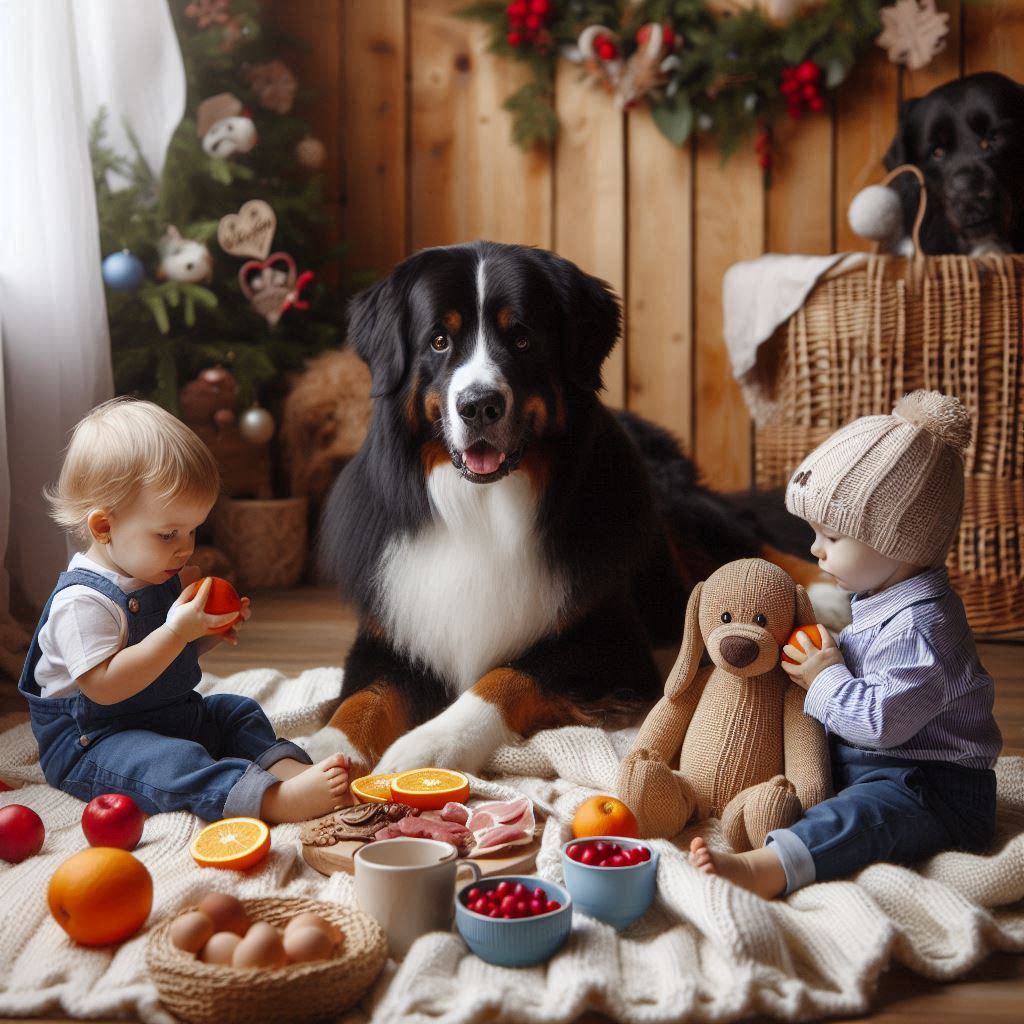
🐾 Integrating Dogs into Family Life with Children
Share
🐾 Integrating Dogs into Family Life with Children
Dogs and children can form some of the most magical bonds. However, introducing a dog into a family with kids requires thoughtful planning and understanding. From ensuring safety to fostering mutual respect, here’s how you can create a harmonious home for both your children and your dog.
🐕 Why Dogs and Children Are a Perfect Match
Dogs are often known as man’s best friend, but their ability to connect with children is just as remarkable. They offer companionship, love, and even teach valuable life lessons like empathy and responsibility. However, like any new relationship, it takes time and attention to build trust and understanding.
🧑🤝🧑 Setting Boundaries and Teaching Respect
1.
Teach Kids How to Approach Dogs
-
Start Slow: Teach your children to approach the dog calmly and gently. Sudden movements or loud noises can startle a dog and may result in an unpredictable reaction.
-
Respect the Dog’s Space: Encourage children to let the dog come to them on its own terms. Always respect when a dog is resting or eating and explain why these moments are private.
2.
Establish Clear Boundaries
-
No Rough Play: Teach your kids that roughhousing or tug-of-war games can cause stress for the dog and might lead to aggressive behavior. Gentle petting and calm play are key.
-
Supervision is Key: Always supervise interactions, especially with younger children. Make sure children understand that they should never bother a dog while it’s sleeping, eating, or playing with toys.
🧑⚖️ Safety First: Supervising Dog-Child Interactions
1.
Know the Dog’s Temperament
Before bringing a dog into a home with children, assess the dog’s temperament. Not all dogs are suited for homes with young kids. A dog’s patience level, tolerance for noise, and overall disposition will play a significant role in how well they adapt.
2.
Teach Basic Commands
Training your dog to respond to basic commands such as “sit,” “stay,” and “leave it” will help you control situations where children may unintentionally overstep boundaries. Teaching kids how to reinforce these commands respectfully is equally important.
🐾 Creating a Kid-Friendly Environment for Your Dog
1.
Designate a Safe Space for Your Dog
Create a safe, quiet spot in your home where your dog can retreat when they need some downtime. This is especially important if the dog is overwhelmed by children’s noise or excitement. A crate or a bed in a low-traffic area can serve as a sanctuary for your dog.
2.
Teach Children to Respect Dog’s Needs
In addition to respecting physical boundaries, it’s important that children learn to understand a dog’s emotional needs. For example, teaching kids to read dog body language can help them recognize signs of stress or discomfort.
👶 Preparing for the Arrival of a New Dog
1.
Introduce Gradually
When introducing a new dog to your family, make sure to do so gradually. Allow both the dog and children time to adjust to each other. The introduction should be calm, and the dog should be given time to settle into the new environment.
2.
Discuss Rules Beforehand
Before the dog arrives, sit down with your children and explain the rules and expectations. Reinforce that this is a new member of the family who needs respect, patience, and understanding.
🐶 Encourage Positive Interactions Between Kids and Dogs
1.
Involve Children in Dog Care
One of the best ways to foster a positive relationship is to involve your children in daily dog care. Have your kids help with feeding, brushing, and even walking (depending on age). This will teach them responsibility and create a strong bond with the dog.
2.
Teach Empathy Through Play
Allow your kids to engage with the dog in activities such as fetch or training exercises. Teach them how to play appropriately, ensuring that the dog enjoys the interaction and isn’t feeling overwhelmed.
🐾 When Things Don’t Go as Planned
Occasionally, dogs and kids may not immediately get along. If issues arise, consider the following steps:
-
Seek Professional Help: If either the dog or child is struggling, consult a professional dog trainer or behaviorist.
-
Patience is Key: Relationships take time. With patience, consistency, and respect, most dogs and children can build strong, lasting bonds.
🎯 Final Woof: Building a Lifelong Friendship
Dogs and children can be a perfect match, but like any relationship, it requires work, respect, and understanding. By fostering a safe and supportive environment, you’ll ensure that your dog and children not only coexist but thrive together as a family.
📌 Related Posts:
🛒 Must-Have Accessories for Family Dogs
Looking for dog accessories that are perfect for families? Check out dog toys, safe chew items, and comfy beds on CyberMutz.com!
